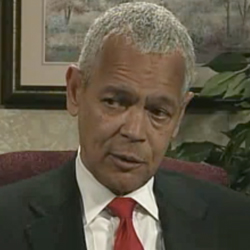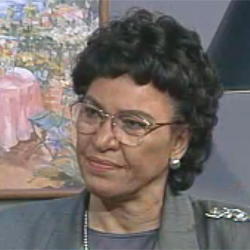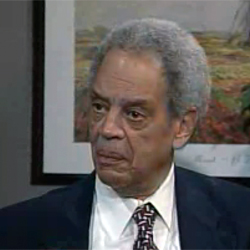[Access a PDF Response Sheet] | [Access a MSWord Response Sheet]
Find out about leadership during the Civil Rights Era. Discover who some of the leaders were and some of the dangers of being a Civil Rights worker. What is Civil Rights Leadership?
What Is Civil Rights Leadership?
Civil Rights leadership can be thought of in two ways. First there are the leaders during the Civil Rights Era—roughly from 1954 to 1968. However other leaders have continued the struggle for civil rights seeking fair employment, education, and housing for minorities and rights for the disabled and elderly after the era ended. This segment will be looking specifically at events during the Civil Rights Era.
Section A: What is the Civil Rights Era?
There are key events that are generally considered part of the Civil Rights Movement. These actions were part of a non-violent system of protest designed to increase the rights of Blacks in America. Timelines of the Civil Rights Era generally begin around 1955 after the Brown v Board of Education decision and end with the assassination of Martin Luther King Jr. in 1968.
Other events include:
1955 — Montgomery Bus Boycott
1957 — Integration of Schools in Little Rock
1960 — Greensboro Sit-ins
1960 — Founding of Student Nonviolent Coordinating Committee
1961 — Freedom Rides
1963 — March on Washington
1964 — Civil Rights Act prohibited discrimination based on race, color, religion, or national origin in public establishments
1964 — Freedom Summer
1965 — Selma-Montgomery March
Task #1:
Select three of the events above and use the internet to write a brief synopsis of what happened during each event.
Many groups were involved in the Civil Rights Movement such as the Southern Christian Leadership Conference, Congress of Racial Equality, the Anti-Defamation League, and the Student Nonviolent Coordinating Committee.
Section B: Who are Civil Rights Leaders?
During the Civil Rights Era there were many important Black leaders that helped the struggle for civil rights move forward. Oliver Hill was a lawyer with the NAACP's Legal Defense Fund and helped argue the 1954 Brown case which ended legal school segregation. One way in which Black leaders brought attention to the causes they were fighting for was through civil disobedience, an active refusal to obey a certain law because of a belief that the law is unjust.
Task #2:
Watch the clip on Civil Disobedience. What is Oliver Hill's opinion on civil disobedience? Do you think that civil disobedience is warranted in certain situations? Is it ever o.k. to break the law?
Influence of Civil Disobedience
Oliver Hill
- Lawyer of Numerous Civil Rights Cases (NAACP lawyer for Brown v. Board of Education)
- Former Director of the Virginia Chapter of the NAACP
- Former Richmond City Councilman
Section C: Julian Bond as Civil Rights Leader
After the 1960 Greensboro sit-ins, Julian Bond led a group of Black students into a 'Whites Only' restaurant in Atlanta in order to gain rights for Black citizens. He was afraid of what might happen to him but he did it anyway. He went on to help form Student Nonviolent Coordinating Committee (SNCC) and served as the communications director.
Task #3:
How did Julian Bond begin as a civil rights leader?
Civil Rights Involvement
Julian Bond
- Founding Member of SNCC
- Former Member of Georgia's Congress
- TV Commentator on America's Black Forum
- Chairman of the NAACP
Task #4:
Watch the Julian Bond clip Influence of Student Non-violent Coordinating Committee (SNCC) Years. How did Julian Bond remain active in the Civil Rights Movement without putting himself 'in harm's way'?
Influence of SNCC Years
Julian Bond
- Founding Member of SNCC
- Former Member of Georgia's Congress
- TV Commentator on America's Black Forum
- Chairman of the NAACP
Section D: Dorothy Height as Civil Rights Leader
Over forty Freedom Schools opened in Mississippi during the summer of 1964. Students of various ages studied throughout the summer in small schools established in churches, homes, and any public space available. In addition to improving the education of the students the hope was that through the Freedom Schools southern Blacks would learn how to become agents of social change. Dorothy Height became involved with Wednesdays in Mississippi, a program that brought interracial teams of women together in Mississippi.
Women's Interracial Teams - Wenesdays in Mississippi
Dorothy Height
- Founding Member of SNCC
- Former Leader within the YWCA
- Past President of the National Council of Negro Women
- Humanitarian Aid Worker in area of Social Justice
Task #5:
What was the purpose of Wednesdays in Mississippi? Do you feel that this was an effective strategy? Would you feel comfortable participating in a program like this one? Why?
Dorothy Height - Former Leader within the YWCA - Past President of the National Council of Negro Women - Humanitarian Aid Worker in area of Social Justice
Section E: What were the Dangers of Participating in the Civil Rights Movement?
In the 1960's as a young Civil rights attorney Julius Chambers had his car blown up, his house fire bombed, and his father's automotive garage burnt to the ground.
Task #6:
Watch the clip Leadership: Challenges. Write about how Chambers reacted to this imminent danger.
Black Leadership Challenges
Julius Chambers
- Lawyer
- Former Director of the Legal Defense Fund
- Chancellor of North Carolina Central University
Section F: Civil Rights Leadership and the Future
Task #7:
Why does Mary Futrell think young people should know about the Civil Rights Movement?
Influence of Civil Rights Movement
Mary Futrell
Teacher
- Former President of the National Education Association
- Dean of Graduate School of Education
Task #8:
Roger Wilkins is optimistic about the future. He feels that race relations have improved, but he believes that there are still issues worth struggling over. What issues does Wilkins feel are worth struggling over in our modern world?
Cautious Optimism
Roger Wilkins
- Former Journalist for the New York Times and Washington Post
- Former Chairman of the Pulitzer Prize Board
- Author and Editor
Discussion Question:
Civil Rights leaders used non-violent forms of protests such as sit-ins, boycotts, and marches to draw attention to laws they felt were unjust. Although they risked being beaten, being arrested, or even being killed they stood up for what they believed in and the 1964 Civil Rights Act that guaranteed equal treatment regardless of race was passed. Why do you think the civil rights leaders promoted civil disobedience and non-violent protest? Do you think the strategies were effective or ineffective? Support your answers with evidence. You may have to look on the internet to learn more about civil rights non-violent protests to complete this question. If you feel non-violent protest is ineffective, describe the form of protest that you would recommend. Write down your ideas and be able to support your perspective in a group discussion.






